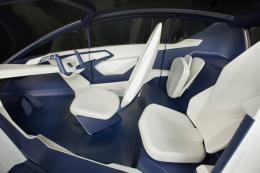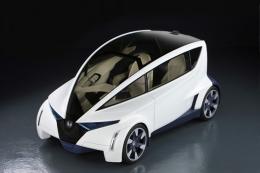Our group scenario focuses on the result of increased urbanization and a larger focus on healthy transportation. The future situation works on creating a healthier and sustainable lifestyle with a growing population in order to counteract the current situations the world is facing. Bruno Latour (2013) highlights societies joint belief of hope, “because as long as we rely on hope, we still expect to escape from the consequences of our actions”. In response, types of transportation for everyday activities need to be considered and developed, as a car would no longer be an ideal factor within a very self-sufficient society. As a group we began brainstorming alternatives to the car, looking at individual powered pods and uni-cycles. These types of devices are energy efficient as their source of energy is provided by the body and will allow for less demand of fossil fuels. They are also much smaller in design, resulting in less congestion on roads with such a high-density population.
Individuals are slowly becoming aware of the need to exercise and obtain a healthy lifestyle. Having said this, there is not a large amount of attention placed on this matter by society as a whole. More immediate focus is being given to cities growing density in urbanization and ways in which to accommodate the new demands. Comments have been made that “to date, research has been geared towards finding ways to increase vehicle efficiency through improved designs, materials and technologies” (TRB, 2011). Focus is often given to the overall design of the car, rather than possible additions that may promote a healthy living environment. Many car companies are beginning to look at these ideas, particularly Honda and their ‘Personal-Neo Urban Transport’ Concept. It has been developed off the idea of a “small ‘footprint’ for maximum convenience in tight urban settings” in order to create a smoother functioning city. Director of advanced design for Honda R&D Americas, Inc. Dave Marek draws attention to how the new generations are discovering the benefits of living in urban centers.
This idea presented by Honda, supports our speculative future in which urbanization in the city centre has increased dramatically. This car design resembles a pod through its compact form and innovative energy efficiency. The appearance of the design from the outside does not reveal the spacious and multi-function interior. It consists of a centre-driving seat, two-rear seat that are retractable to increase the storage capacity when needed. The windshield also acts as a display method for navigations systems and viewing cameras. The vehicle has also been equipped with a modular rear engine bay to accommodate a variety of potential developments in technologies. This includes the permanent introduction of conventional displacement internal combustion engines, a hybrid gasoline-electric powertrain, or a battery-electric powertrain. This adaptable addition to the design allows it to be easily accepted in society and accessible as a future technology. It is important that this concept is carried through the designing process of our future technology. Having a flexible but energy efficient concept for transportation within our future will allow it to be seamlessly incorporated into city centres with little conflict while still fulfilling the criteria of our scenario. Research boards highlight important concepts to be considered in which, “the public must ultimately be committed to reducing transportation energy use and emissions. (TRB, 2011). Honda’s design provides detailed inspiration for the designing process and efficiency that may be easily integrated into society for a positive future. Having said this, it doesn’t reflect matters of health and fitness, which are a key component of our future. It becomes our challenge to develop a realistic but healthy form of transportation that can be visualized within a 2050 context.
 Internal structure of Honda’s speculative vehicle
Internal structure of Honda’s speculative vehicle
In order to gain more insight into ways vehicles can be built around human energy, I researched potential ideas and concepts of human powered cars that were developed but never socially accepted. It is not a newly developed idea but rather an ongoing immediate solution for mechanical challenges and fuel limitations. Examples of human-powered technology can be examined back to Hosea W.Libbey’s parallel hybrid motorized bicycle in 1897 and through to developments into human-electric hybrid vehicles seen in a present day context. The concept has already been considered and is slowly becoming accepted within a social scene, allowing it to be a highly possible outcome within 2050. From here we are posed with the challenge within our future scenario to develop human energy efficient, healthy and innovative transportation designs that do not closely resemble methods seen today.
References:
Books:
Latour, B, 2013, Telling Friends and Foes at the Time of the Anthropocene, Thinking the Antropocene, Paris
2005, Making cars more fuel efficient technology for real improvements on the road, International Energy Agency, Paris
Organisation for Economic Co-operation and Development, 2001, Saving oil and reducing CO2 emissions in transport options and strategies, Paris
Transportation Research Board, 2011, Policy Options for Reducing Energy Use and Greenhouse Gas Emissions from U.S. Transportation, National Academy of Sciences, United States
Websites:
Honda, 2009, Honda’s ‘Personal-Neo Urban Transport’ Concept, Phys.org, viewed 23 October 2014, http://phys.org/news179081899.html
2011, Hybrid Human Powered Vehicles to Transform Future Transport, Designbuzz, viewed 23 October 2014, http://www.designbuzz.com/hybrid-human-powered-vehicles-transform-future-transport/



